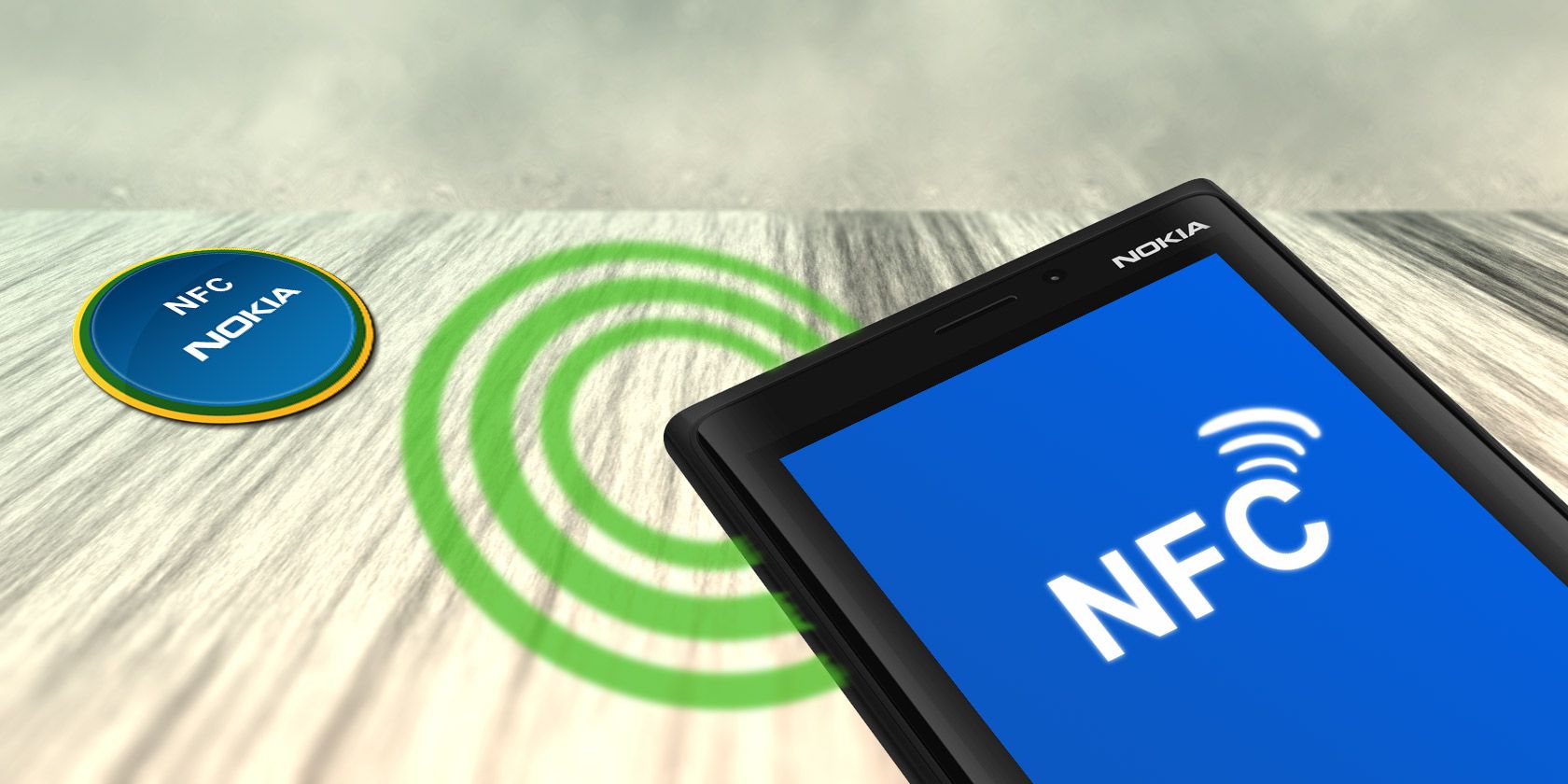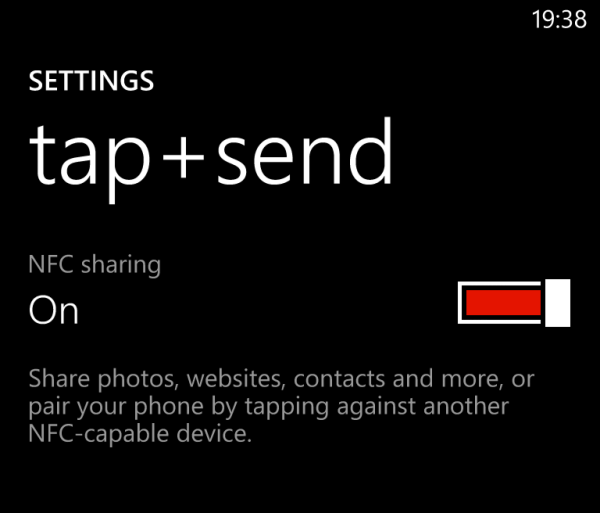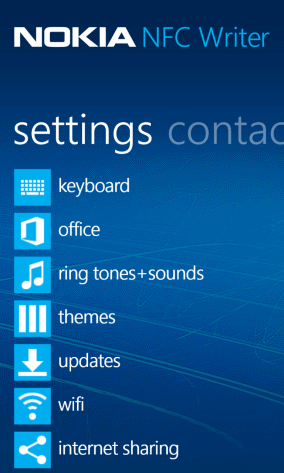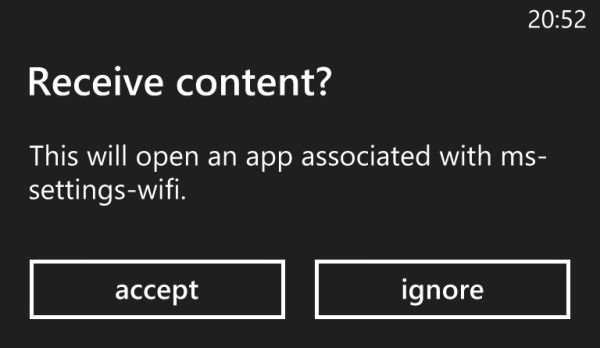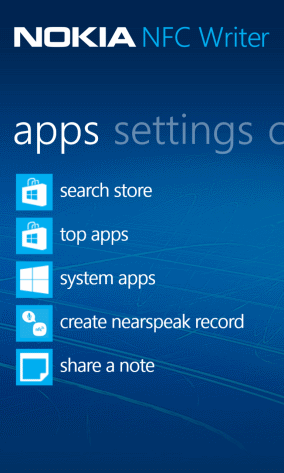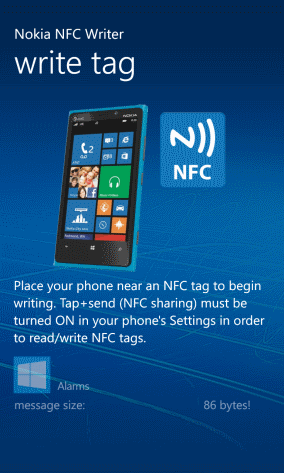There’s a black sticker on my desk, which apart from looking incongruous and probably a prime candidate for removal next time one of my children come to see daddy at work, is remarkably useful.
Thanks to the magic of NFC, it enables me to activate my Nokia Lumia 920’s wireless networking with a single touch. I’m also an Android user, making use of many of that platform’s wonderful features; this sticky NFC tag represents Windows Phone’s first real steps into automation, when a smartphone performs pre-determined tasks based on a specific condition. In this case, the condition is contact with the NFC tag that contains the details of the task.
NFC, or near field communication, has been around for a few years now, and is an increasingly popular feature in smartphones. Intended to facilitate data transfer, contactless transactions in stores and even simplify the setup of things like WiFi connections, NFC can also be used to program NFC tags, usually sticky labels like the one on my desk.
In fact it is only recently that I discovered that NFC was possible with the Nokia Lumia 920, and that tags could be programmed. Although a feature that I’ve seen on other platforms and devices, I was unsure as to how mature NFC support was on the Nokia.
Nokia’s Involvement with NFC
It seems I shouldn’t have been so slow out of the gate with NFC, however. Back in 2004 the Near Field Communication (NFC) Forum was founded by Sony, Philips and Nokia. Although a company producing very different phones that it is today, Nokia was there at the beginning and even released the first NFC phone in 2006, the Nokia 6131.
On the Nokia Lumia 920, NFC can be used for the following:
- Connecting accessories (such as Nokia headsets)
- Sharing contact details with other NFC devices
- Launching apps
There are some other uses, too, which are less developed. For instance, you might use an NFC tag to open Foursquare and check in when you arrive at a venue (although this would require your own/a compatible NFC tag to be placed at the venue in advance). You might also use the Windows Phone Wallet, which uses NFC to enable payments to be made from your phone, although this is only available if supported by your network.
For the remainder of this post, we’ll be looking at automation options with Nokia Lumia Windows Phones and NFC tags, but if you want to know more about this technology, Matt's article What Is NFC & Should You Buy a Phone That Has It? should provide the answers you're looking for.
Using Nokia NFC Writer
There are two things you need before you can start using NFC for automation and time saving on the Nokia Lumia 920. The first is the Nokia NFC Writer app, available free from the Windows Phone Store.
The second is a few compatible, good-quality NFC tags, which can be purchased from Nokia or via the usual outlets (Amazon, eBay, etc.). These are almost always adhesive, and can be positioned in strategic places – for instance, on a desk, table, perhaps on your car dashboard.
In order to use Nokia NFC Writer once installed you will need to enable the Tap + send feature in the Settings screen. Once this has been done, you will – as the phone will inform you – be able to "share photos, websites, contacts and more." You’ll also be able to pair your phone with another NFC device – in our case, one or more NFC tags.
Nokia NFC Writer is the most popular app for writing NFC tags on Windows Phone. Others include NFC Interactor ($1.99) and NFC Launchit.
A couple of example uses for NFC tags follow, but before this, you should know how to use the tags with a Nokia Lumia 920. The "near field" aspect of the technology assumes physical or very close contact. In the case of tags, your phone will need to be placed camera-side down atop the tag in order to program it and to receive instructions.
Launch WiFi with NFC
The first thing I attempted to do with my collection of NFC tags was to launch wireless networking on my Nokia Lumia 920. It seemed reasonable that this should be pretty straightforward, and it was.
Begin by selecting a tag and placing it by your phone. There is no need to remove the backing paper at this stage, as you’re really just testing.
In Nokia NFC Writer, switch to the menu and select Compose. Swipe left to Settings and select wifi, and follow the on-screen instructions to place your phone on the tag. The instructions will be sent to the tag, programming it; all you need do now is tap Save, which will add the tag to your favourites.
To launch WiFi, place your phone on the tag. This action will prompt a dialogue box asking if you want to Receive content – tap accept to proceed. Note that Windows Phone prevents apps from changing settings, so although you are taken to the WiFi settings page, the act of changing your wireless connection status is left to you to make with a physical action.
Launching Apps with NFC
Creating an NFC command to launch an app isn’t much different
Tap Compose then swipe left to apps, where you should find a list of options. To launch an app you should select from the System Apps selection of built-in Microsoft and Nokia apps, or use the Search Store option to find apps that you have already installed on your phone (a little clunky – hopefully this will be revised into an "installed apps" option in future).
Once the app is selected, the instruction to launch it will be written to your phone. This might, for instance, be an instruction to launch Nokia Drive when you place your phone on an NFC tag attached to your car’s dashboard cradle. Alternatively, you might wish to launch the Amazon Kindle app when you go to bed, courtesy of a well-placed NFC tag by your bedside.
Conclusion: NFC Is a Great Way to Automate Your Nokia Lumia 920!
Strangely, there isn’t much you can do with the Windows Phone platform when it comes to automation. Although voice control is quite advanced, there are no apps that offer anything like Android's Tasker.
NFC is a way around this, the sending of tweets and text messages, the toggling of music playback and even enabling you to record audio to an NFC tag that someone else can listen to later.
Better still, despite their low price, NFC tags can be overwritten by creating a new instruction, making the system particularly flexible. For Windows Phone and Nokia Lumia 920 users, NFC is a huge bonus for anyone interested in automation.
What would you love to automate on your Windows Phone 8? Give developers a hint, maybe they'll listen!

